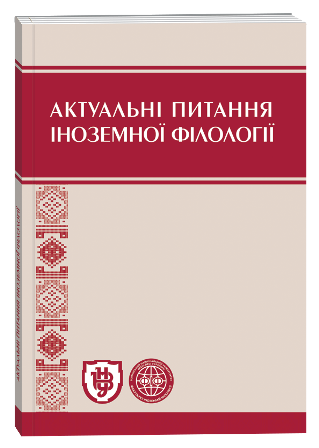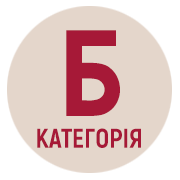WRITTEN COMMUNICATION WITHIN THE FIELD OF LINGUISTIC ANTHROPOLOGY
Keywords:
writing, oral speech, written speech, printed form of speech, handwritten language, paraverbal means, nonverbal meansAbstract
This article is devoted to the evolution of writing. Attention is given to reasons behind the emergence of writing systems, and issues connected with their formation and development. Differential signs of oral and written speech are substantiated, taking into account a number of factors. Present-day patterns of communication are described. It has been determined that modern communicants are inclined to use various images and other non-alphabetical graphical means when communicating with one another. This suggests that for some reason, we are returning to a figure-based pattern of communication to some extent. The focus is on two forms of written communication − handwritten and printed. A number of assertions made by researchers in the last century about the differences between oral and written communication have been cited, in consideration of the new options for disseminating information which have appeared in the digital age. An overview is given of the range of semiotic resources that are available to modern communicants, and the differences between oral and written communication are well documented, taking into account the latest forms and methods of communication. Some parallels have been drawn between oral and written speech, taking into account the specific features of the two forms, and their advantages, disadvantages and possibilities are enumerated. Attention is focused on the potential of written means of interaction, their modifications and communicative and pragmatic orientation. It is emphasized that the expressive options used by modern communicators in the process of interacting significantly expanded thanks to the development of paraverbal elements. Thesemodifications are reflected not only in terms of expression, but also on the level of content. The paper also focuses on several groups of semiotic resources: segmentation; fonts and colors; non-pictorial and non-photographic graphic elements; iconic elements; infographics; and other graphic effects. Their components are highlighted, and their potential opportunities and importance in interactive processes are partially outlined. A number of topical issues are raised that require solutions and comprehensive analysis by linguists. Attention is given to innovative trends which have given rise to a number of problems in the field of multimodal literacy and which lie outside the established norms of communication, but which may themselves be in the process of becoming norms.
References
Амирова Т. А. Функциональная взаимосвязь письменного и звукового языка / Т. А. Амирова ; отв. ред. чл.-кор. АН СССР В. М. Солнцев. – М. : Наука, 1985. – 288 с.
Вахек Й. Письменный и печатный язык / Й. Вахек // Пражский лингвистический кружок. – М. : [б. и.], 1967. – С. 535–543.
Волков А. А. Грамматология. Семиотика письменной речи / А. А. Волков. – М. : Изд-во Моск. ун-та, 1982. – 144 с.
Гельб И. Опыт изучения письма. Основы грамматологии / Игнаций Гельб ; [под ред. и с предисл. И. Дьяконова] ; [пер. с англ. Л. С. Торбовицкой, И. М. Дунаевской]. – [2-е изд.]. – М. : Радуга, 1982. – 366 с.
Зиндер Р. Л. Очерк общей теории письма / Л. Р. Зиндер. – Л. : Наука, 1987. – 111 с.
Николаева Т. М. Письменная речь и специфика ее изучения / Т. М. Николаева // Вопр. языкознания. – 1961. – № 3. – С. 78–86.
Соссюр Ф. де. Курс загальної лінгвістики / Фердінанд де Соссюр ; [пер. з фр. А. Корнійчук, К. Тищенко]. – К : Основи, 1998. – 324 с.
Ситдикова І. В. Проблема письма у сучасній лінгвістиці / І. В. Ситдикова // Проблеми семантики слова, речення та тексту : зб. наук. пр. / відп. ред. Ніна Корбозерова. – К : Вид. центр КНЛУ, 2002. – Вип. 8. – С. 305–309.
Downloads
Published
How to Cite
Issue
Section
License
Copyright (c) 2025 Лариса Макарук

This work is licensed under a Creative Commons Attribution 4.0 International License.







